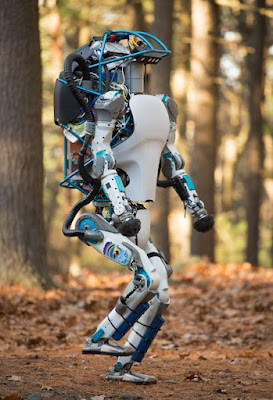• Robots with human-like bodies, facial expressions, and voice can walk, converse, and interact with objects, offering potential applications in various sectors and businesses.
What Is the Purpose of Humanoid Robots?
• Humanoid robots can be useful for a variety of purposes. Humanoid robots have the following advantages:
• They can help humans with dangerous, complex, or time-consuming tasks like disaster response, space exploration, manufacturing, healthcare, and housework.
• Persons who are lonely, secluded, or require particular care, such as the elderly, children, and persons with disabilities, can benefit from companionship and social engagement.
• They have the ability to improve human talents and experiences such as education, entertainment, art, and sports.
• By functioning as models and testbeds for artificial intelligence (AI) and robotics research, they can help us understand human intelligence, behavior, and emotions.
Here Are Some Humanoid Robot Examples.
• Humanoid robots have been produced or are being developed all around the world. Some of the most well-known and advanced are:
• Sophia is a humanoid robot designed by Hanson Robotics. She is intended to be a social robot capable of interacting with humans through the use of natural language and facial expressions.
She is the world's first robot citizen and the United Nations Development Programme's first robot Innovation Ambassador. She has appeared on numerous television shows and events, including The Tonight Show and Good Morning Britain.
• Atlas :
Atlas is a humanoid robot created by Boston Dynamics. He is intended to be a versatile robot capable of navigating difficult terrains and doing a variety of duties such as running, jumping, climbing, lifting, and transporting. He may also learn from his mistakes and adjust to new situations.
• ASIMO:
Handa created ASIMO, a humanoid robot. He is one of the world's oldest and most well-known humanoid robots. He has the ability to walk, run, dance, play soccer, and recognize faces and sounds. Around the world, he has been used for demonstrations, exhibitions, and educational reasons.
• Pepper
Paper is a humanoid robot created by SoftBank Robotics. He is intended to be a pleasant, emotional robot capable of communicating with humans through words, gestures, and touch. He is capable of recognizing and responding to human emotions. He's been used in customer service, hospitality, education, and entertainment.
• Humanoid robots' future focuses on developing realistic, expressive robots that closely mimic human appearance, behavior, and emotions, enhancing their performance, intelligence, and autonomy.








.jpeg)


0 Comments